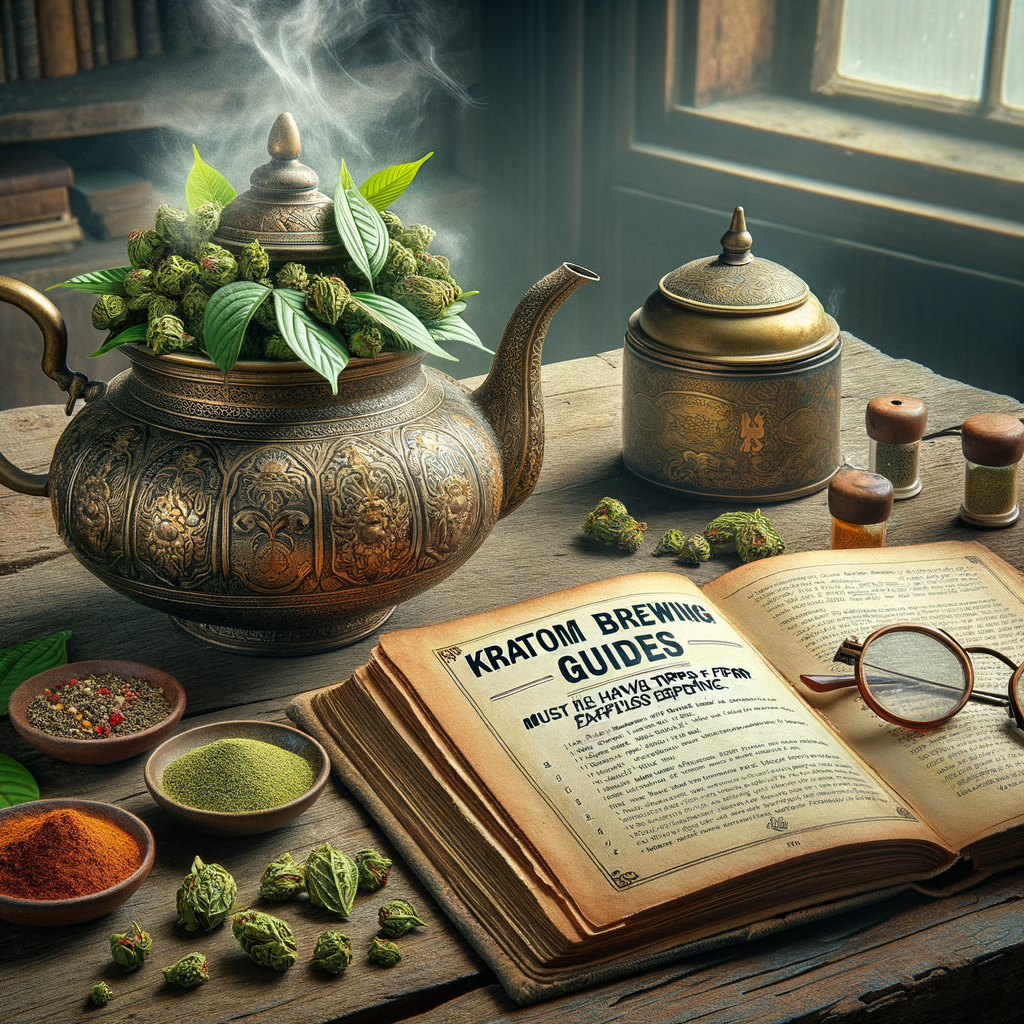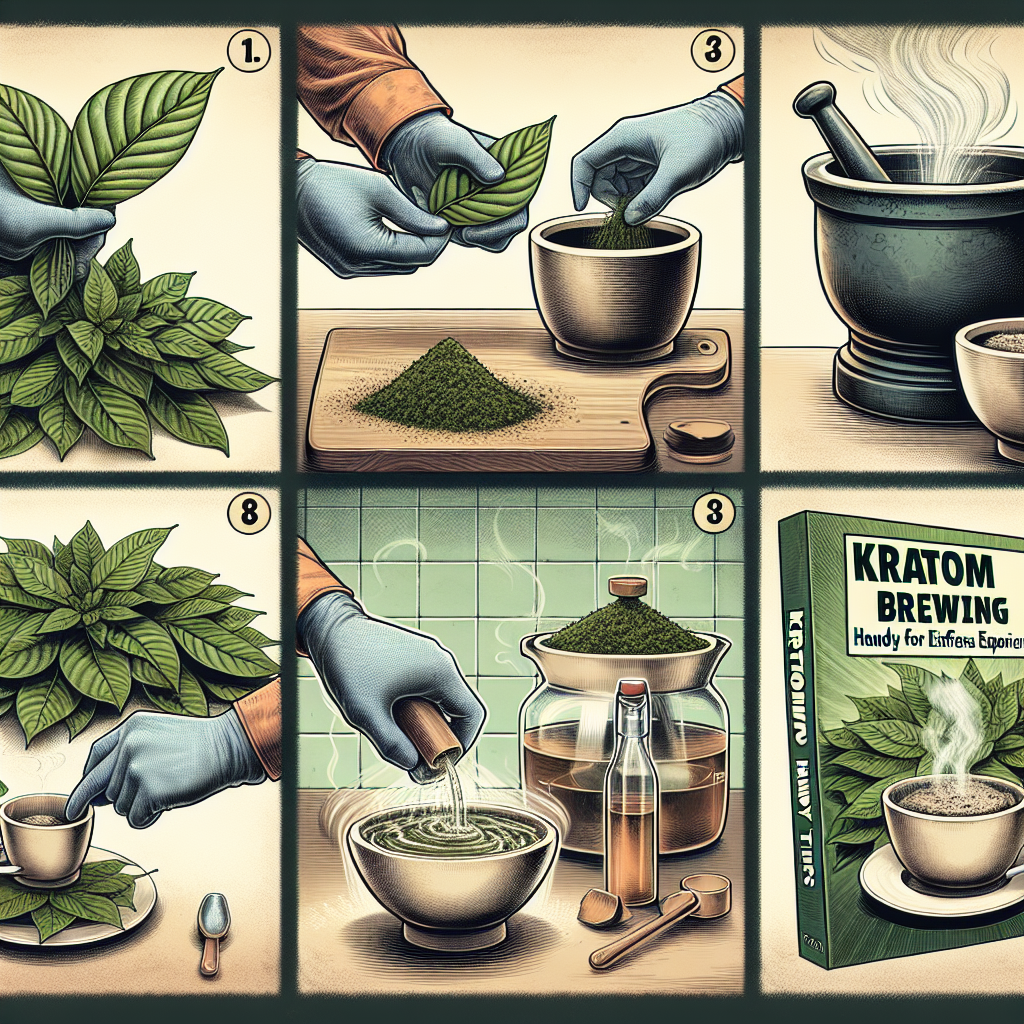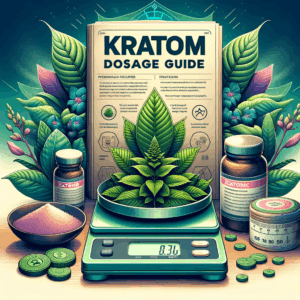
Kratom Brewing Guides: Must-Have Tips for Effortless Experience
- Understanding Kratom: A Brief Overview
- Choosing the Right Kratom Strain
- Sourcing Quality Kratom
- Essential Brewing Equipment
- The Brewing Process
- Tips for an Enhanced Brewing Experience
- Understanding Dosage and Duration
- Common Mistakes to Avoid
- Storing Your Kratom
- Benefits of Brewing Kratom Tea
- FAQs
- 1. Is kratom legal?
- 2. Can I mix kratom with other substances?
- 3. How long does kratom tea last?
- 4. Can I reuse kratom leaves?
- 5. What’s the best time to drink kratom tea?
- 6. Can kratom tea cause side effects?
- 7. How do I know what strain is right for me?
- 8. Are there recommended brands for kratom?
- 9. What happens if I miss a dose?
- 10. What’s the best way to approach kratom for the first time?
- Conclusion
- References
Understanding Kratom: A Brief Overview

Kratom, a tropical tree native to Southeast Asia, boasts leaves that contain compounds known for their psychoactive properties. Traditionally used in countries like Thailand and Malaysia, it has gained attention in the West for its potential benefits. Users often seek it for pain relief, mood enhancement, and even as an aid in addiction recovery.
As more people explore kratom, ways to consume it evolve. While capsules and powders are popular, brewing kratom tea is a favored method. Brewing provides a flavorful approach that offers a comforting experience. In this guide, we’ll walk you through the essentials of brewing kratom tea efficiently and effortlessly.
Choosing the Right Kratom Strain
Selecting the right strain is crucial for a successful kratom tea experience. Kratom comes in various strains, each offering unique effects. Most users categorize these strains into three main types: red, green, and white.
– Red Strains: Often known for their calming effects, red strains are ideal for relaxation and pain relief. Users frequently turn to these in the evenings or after stressful days.
– Green Strains: Balanced in nature, these strains offer both energy and relief. They are perfect for daytime use.
– White Strains: Renowned for their stimulating effects, white strains provide energy and focus, making them ideal for productivity.
The strain you choose should align with your desired effects. No one-size-fits-all answer exists; it’s a matter of personal preference and need.
Sourcing Quality Kratom
Where you source your kratom can greatly impact your experience. Purchasing from reputable vendors ensures that you receive pure and high-quality products. Here’s what to consider when shopping for kratom:
1. Reputation: Look for vendors with positive reviews and testimonials. Customer feedback can provide vital insights into product quality.
2. Testing: Reliable sellers often test their kratom for contaminants and potency. Such transparency builds trust.
3. Variety: A wide range of strains indicates a reputable supplier. This variety allows users to explore and find what’s best for them.
When you prioritize quality, you enhance the overall brewing and consumption experience.
Essential Brewing Equipment
To brew the perfect kratom tea, you need a few essential items. Gathering the right equipment simplifies the process. Here’s a list of must-haves:
– Kettle or Pot: Use one that can boil water effectively. Electric kettles are especially handy for quick brewing.
– Strainer: You’ll need a fine mesh strainer or coffee filter to separate the leaves from the liquid.
– Measuring Spoon: Accurate dosage is key. A tablespoon works for most users.
– Mug or Teapot: Choose one suited for your serving size.
With the essentials in hand, you’re ready to brew kratom tea with ease.
The Brewing Process
Brewing kratom tea is a simple yet rewarding process. Follow these steps to ensure a delightful experience:
1. Measure Your Kratom: Start with 1-2 tablespoons of kratom powder. Beginners may want to start with 1 tablespoon and see how it feels.
2. Boil Water: Heat around 2-4 cups of water. Too much water dilutes the flavor, while too little makes it strong and bitter.
3. Combine Kratom and Water: Once the water boils, remove it from heat. Let it cool for about 5 minutes, then add the kratom powder.
4. Simmer: Place the pot back on low heat and maintain a gentle simmer for 15-20 minutes. Stir occasionally.
5. Strain the Tea: After simmering, use a strainer to remove the kratom powder from the liquid.
6. Add Flavor: If desired, enhance the taste with lemon, honey, or other flavorings.
7. Serve and Enjoy: Pour the tea into your mug and savor the experience.
Tips for an Enhanced Brewing Experience
To make your kratom tea more enjoyable, consider these helpful tips:
– Temperature Matters: Using water that’s too hot can destroy some of the alkaloids. Aim for just below boiling.
– Experiment with Strains: Don’t hesitate to mix different strains for unique effects and flavors.
– Flavor Enhancements: Fresh herbs like mint or spices such as ginger can add delightful notes to your tea.
The right techniques can drastically affect your brewing experience. Take your time and find what works best for you.
Understanding Dosage and Duration
Knowing your dosage is crucial to a fulfilling kratom tea session. Generally, users report varied experiences when consuming different amounts. Here’s a breakdown of common dosages:
| Dosage | Effects |
|——–|———————————-|
| 1-2g | Mild stimulation, relaxation |
| 3-5g | Moderate effects, pain relief |
| 5-8g | Stronger effects, sedation |
| 8g+ | High sedation or numbing effects |
Duration: When brewed as tea, the effects usually kick in within 30-60 minutes and can last for 3-6 hours. However, individual experiences may vary based on factors like body weight and metabolism.
Always start low when measuring out your doses. You can gradually increase until you find your sweet spot.
Common Mistakes to Avoid
Everyone makes mistakes when they start something new. Here are a few common errors to avoid while brewing kratom tea:
1. Using Too Hot Water: As previously mentioned, overly hot water can compromise the alkaloids in kratom.
2. Ignoring Dosage: Skipping measurements and guessing your dose can lead to an overwhelming experience. Be precise.
3. Neglecting Ingredients: Some users forget to enhance the flavor of their tea. Simple additions can elevate your experience.
4. Rushing the Brewing Process: Patience is key! A rushed brew almost always leads to undesirable tastes and effects.
By avoiding these pitfalls, you ensure a smoother brewing process and a better experience overall.
Storing Your Kratom
Proper storage plays a critical role in maintaining kratom’s potency and freshness. Storing it correctly prevents degradation over time. Here are some tips for optimal storage:
1. Cool and Dark: Keep kratom in a cool, dark place, like a cupboard, away from sunlight. Heat and light can diminish its potency.
2. Airtight Containers: Use airtight containers—like glass jars or vacuum-sealed bags—to keep moisture and air out.
3. Label Your Strains: If you purchase different strains, label each container clearly. This helps avoid confusion later.
Easy access and effective storage systems create a hassle-free experience for users, allowing you to enjoy kratom whenever you want.
Benefits of Brewing Kratom Tea
Kratom tea offers several notable benefits. Understanding these can enhance your appreciation for this natural remedy. Here are some reasons why brewing your kratom has advantages:
– Easier Digestion: For those sensitive to kratom powder, brewing may ease the digestive process.
– Customizable Experience: Brew creators can control flavor and strength, allowing for a personalized drink.
– Moment of Enjoyment: Taking the time to brew can create a meditative experience, adding value to the act itself.
By brewing your tea, you can take full advantage of the potential benefits that kratom has to offer.
FAQs
1. Is kratom legal?
Laws regarding kratom vary by location. Always check local regulations before purchasing or consuming it.
2. Can I mix kratom with other substances?
Mixing kratom with other herbs and substances can be risky. Always do your research to understand the potential effects.
3. How long does kratom tea last?
Effects typically last between 3 to 6 hours, but experiences vary by individual.
4. Can I reuse kratom leaves?
You can, but the potency significantly decreases. Consider using fresh leaves for optimal effects.
5. What’s the best time to drink kratom tea?
This depends on personal preference. Some prefer it in the morning for energy, while others use it to unwind.
6. Can kratom tea cause side effects?
Yes, potential side effects include nausea, dizziness, or increased anxiety.
7. How do I know what strain is right for me?
Experiment with different strains to determine what effects align best with your needs.
8. Are there recommended brands for kratom?
Look for reputable vendors with positive customer reviews and lab testing for quality assurance.
9. What happens if I miss a dose?
If you miss a dose, simply resume your regular routine. Monitor how you feel for any changes.
10. What’s the best way to approach kratom for the first time?
Start with a low dose, take note of your body’s responses, and adjust gradually for maximum comfort.
Conclusion
Brewing kratom tea can be an enjoyable, meaningful experience. By choosing quality strains, crafting your brewing method, and storing your tea properly, you set yourself up for success. Remember to take your time and personalize each process. Whether you seek relaxation or relief, kratom tea may become a welcome ritual in your daily routine.
Feel free to explore and experiment until you discover what you love most. Happy brewing!
References
1. American Kratom Association
2. Kratom Science
3. Kratom For Sale
4. Botanical Shaman
5. Kratom Insider


